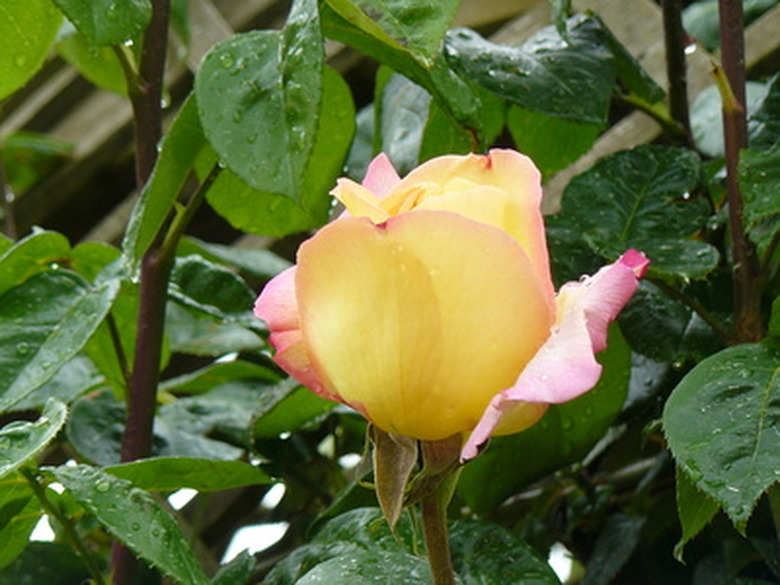How To Revive Storm Damaged Rose Bushes
Things Needed
- Shears
- Bleach
- Fungicidal spray
Heavy winds, excessive rain and hail can all damage an otherwise healthy rose bush. After a storm roses may look bedraggled, but they can be brought back to their prior health. Broken canes are the main concern after most storms, but excessively wet weather can also lead to other problems. Blackspot is a fungus that yellows and kills new leaf growth on the rose bush; roses that have been subjected to wet-weather storms are susceptible. Minimize the damage once the weather clears and return your roses to their former glory.
Step 1
Cut out any severely damaged or broken canes with a pair of clean shears. Remove these at the base of the plant where they emerge from the crown (where the canes connect to the root system).
- Heavy winds, excessive rain and hail can all damage an otherwise healthy rose bush.
- After a storm roses may look bedraggled, but they can be brought back to their prior health.
Step 2
Inspect the rose bush for signs of fungus. Look for yellowing leaves, black-spotted leaves or a powdery residue on the leaves and stems.
Step 3
Prune away the areas suffering from fungal problems. Cut off the branch to the healthy area by cutting just above a bud or leaf set.
Step 4
Rinse the shears in a sterilizing solution after each cut to prevent the spread of the fungus to healthy areas of the plant. Combine one part bleach with nine parts water and use this to sterilize the shears.
Step 5
Treat the bush with a fungicidal spray after removing all the storm-damaged parts. Follow label application instructions when applying fungicide.
- Inspect the rose bush for signs of fungus.
- Rinse the shears in a sterilizing solution after each cut to prevent the spread of the fungus to healthy areas of the plant.
Tip
Regular yearly pruning gets rid of weak canes and minimizes the chances for storm damage from high winds. Treat roses with a sulfur dust, available at garden centers, each spring to help prevent fungal problems caused by excessive moisture.
Warning
Do not leave the broken canes, fallen foliage or other plant debris caused by the storm around the rose bush. This debris may become a breeding ground for fungus, disease organisms or insect pests.
